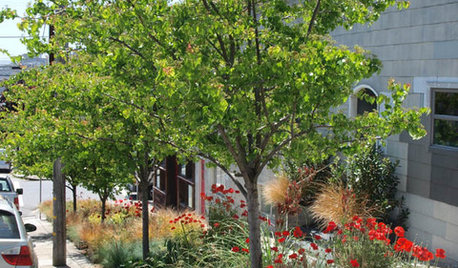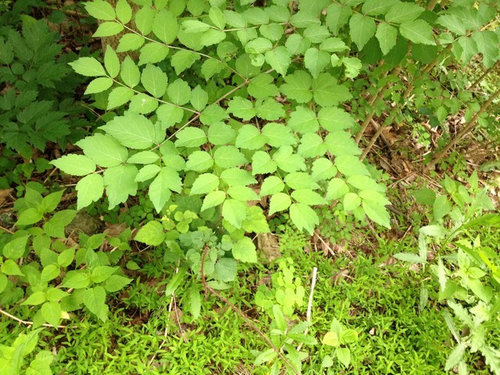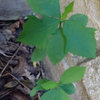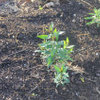mutant tree of heaven?
agkistrodon
9 years ago
Related Stories

CURB APPEALTake Your Hell Strip to Heavenly Heights: 8 Design Ideas
Trade weedy dirt and trash for a parking strip filled with wispy grasses, low-growing flowers and textural trees
Full Story
SHOP HOUZZHouzz Products: Create a Cat Heaven at Home
Show kitty you care and keep your style too with fun and cozy cat beds, perches, trees and decor
Full Story
PHOTO FLIP80 Stairways to Design Heaven
Step on up and peruse this collection of spectacularly stylish staircases
Full Story
REMODELING GUIDESKey Measurements for a Heavenly Stairway
Learn what heights, widths and configurations make stairs the most functional and comfortable to use
Full Story
DECORATING GUIDESHouzz Tour: A Live-Work Space With a Heavenly Heritage
Soaring ceilings and wood beams inspire a designer creating her home and office in a converted historic church
Full Story
TREESHow to Use Trees Inside
Bring nature close by integrating the beauty of trunks and trees — even smaller leafy trees — into your home
Full Story
SIDE YARD IDEASNarrow Trees for Tight Garden Spaces
Boost interest in a side yard or another space-challenged area with the fragrance and color of these columnar trees
Full Story
SPRING GARDENING7 Spectacular and Practical Spring-Flowering Trees
Put on a beauteous show in the garden with a landscape tree awash in flowers — just do your homework first
Full Story
MOST POPULARA Magical Tree House Lights Up for Christmas
From the Most Popular file: An incredible tree house takes things up a notch for the holidays. See how it came to be
Full Story
MOST POPULARThe Most Incredible Kids' Tree House You'll Ever See?
Duck your head to enter this unforgettable Dallas wonderwork, lovingly crafted with imaginative delights
Full Story











agkistrodonOriginal Author
aegis1000
Related Professionals
Wrentham Landscape Architects & Landscape Designers · Anderson Landscape Contractors · Waterbury Landscape Contractors · Harvey Landscape Contractors · Hoffman Estates Landscape Contractors · Hollywood Landscape Contractors · McLean Landscape Contractors · New Braunfels Landscape Contractors · Point Pleasant Landscape Contractors · Red Oak Landscape Contractors · Rosemount Landscape Contractors · Round Lake Landscape Contractors · St. Louis Landscape Contractors · Tacoma Landscape Contractors · Woodburn Landscape ContractorsagkistrodonOriginal Author
IanW Zone 5 Ont. Can.
agkistrodonOriginal Author
morz8 - Washington Coast
Iris GW
lycopus
agkistrodonOriginal Author
agkistrodonOriginal Author
agkistrodonOriginal Author
agkistrodonOriginal Author
agkistrodonOriginal Author
lycopus
agkistrodonOriginal Author
Atlamol
agkistrodonOriginal Author
larry_gene